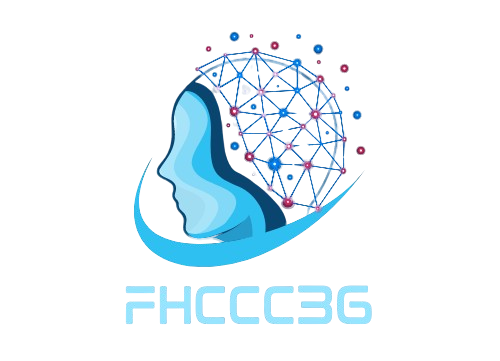In the present interconnected world, innovation has turned into an essential piece of day to day existence, offering remarkable accommodation, network, and open doors for organizations and people the same. Notwithstanding, the ascent of computerized stages has additionally prompted the multiplication of digital violations — crimes that happen in the advanced domain, taking advantage of innovation for unlawful additions. These violations range from information breaks and wholesale fraud to additional complex assaults like ransomware and digital surveillance, making a shadowy hidden world where culprits frequently stay inconspicuous and untraceable.
Digital wrongdoings have developed essentially https://cybercrimes.us since the beginning of the web. At first, they were generally restricted to PC infections and basic hacking endeavors by people looking for reputation or diversion. These early digital wrongdoings, while problematic, were generally unsophisticated contrasted with the dangers confronted today. As innovation progressed and society turned out to be progressively reliant upon computerized frameworks, digital hoodlums turned out to be more coordinated and professionalized, shaping organizations that work similar as conventional criminal associations. These gatherings frequently work together for huge scope assaults, focusing on states, organizations, and people across the globe.
One of the most outstanding types of digital wrongdoing today is ransomware — a noxious programming that penetrates a casualty’s PC framework, scrambling documents and requesting installment, frequently in cryptographic money, to reestablish access. Ransomware assaults have become more successive and harming, focusing on clinics, schools, and, surprisingly, whole urban communities. Much of the time, these assaults disturb fundamental administrations, causing mayhem and monetary misfortune for a monstrous scope. The culprits, frequently protected by refined anonymizing advances and working from purviews with careless digital wrongdoing regulations, oftentimes slip by everyone’s notice.
One more pervasive sort of digital wrongdoing is data fraud, where crooks take individual data, for example, government backed retirement numbers, charge card subtleties, and login accreditations to perpetrate extortion. This taken data is many times sold on the dim web — a secret piece of the web that fills in as a commercial center for criminal operations. The effect of fraud can be obliterating for casualties, prompting monetary misfortune, harmed FICO ratings, and an extensive recuperation interaction to reestablish security and trust.
Phishing assaults are one more typical type of digital wrongdoing, where aggressors trick people into uncovering delicate data by mimicking genuine elements, like banks or online administrations. These assaults are turning out to be progressively modern, using progressed social designing procedures to deceive even the most cautious clients. Phishing tricks frequently show up as apparently credible messages, instant messages, or sites, baiting casualties into giving their own data or downloading vindictive programming. Notwithstanding boundless mindfulness crusades, phishing stays a critical danger because of its versatility and the steady development of strategies utilized by hoodlums.
Digital violations are restricted to monetary benefit as well as reach out into the domain of undercover work and fighting. Legislatures and state-supported bunches have utilized digital assaults as a device for undercover work, damage, and international impact. High-profile occurrences, for example, the hacking of government organizations or basic foundation feature how digital violations have turned into an essential piece of worldwide struggle. These digital reconnaissance exercises frequently target protected innovation, state privileged insights, and delicate correspondences, making another milestone where conventional ideas of safety and fighting are consistently tested.
In light of the developing danger of digital violations, state run administrations, associations, and people have sloped up their safeguards, putting resources into network safety measures and regulation pointed toward safeguarding touchy information and preventing vindictive entertainers. Network safety firms assume an essential part in this fight, creating innovations that recognize and relieve dangers while teaching general society and organizations on prescribed procedures. In spite of these endeavors, the steadily developing nature of digital wrongdoing makes it a consistent mental contest. Hoodlums persistently foster new methods and malware, making it challenging for network protection measures to remain ahead.
The lawful scene encompassing digital violations is intricate and frequently deficient to stay up with the fast advancement of innovation. Numerous purviews have regulations that are either obsolete or need authorization abilities, permitting digital hoodlums to take advantage of legitimate escape clauses or work from nations with indulgent guidelines. Global collaboration is fundamental for battling these violations, however varying regulations, political pressures, and jurisdictional difficulties confuse composed endeavors. Thus, the authorization of digital wrongdoing regulations frequently lingers behind, making it challenging to consider culprits responsible.
The social effect of digital wrongdoings reaches out past monetary misfortunes, impacting public confidence in innovation and advanced frameworks. As individuals become more mindful of the dangers related with online exercises, worries about protection and information security are expanding. Numerous people and organizations are reexamining their utilization of innovation, carrying out more grounded safety efforts, and looking for ways of shielding themselves from digital dangers. By the by, the dependence on computerized stages stays fundamental in the cutting edge world, making a steady strain between the advantages of innovation and the dangers of digital wrongdoing.
Pushing ahead, the fight against digital wrongdoing requires a multi-layered approach that includes mechanical development, legitimate changes, and worldwide participation. Instruction is likewise a basic part, as bringing issues to light about safe web-based practices can assist people and associations with protecting themselves against expected dangers. As society turns out to be more computerized, the requirement for a proactive and versatile way to deal with network protection turns out to be perpetually squeezing. The future will probably see a proceeded with battle between those trying to take advantage of innovation for criminal purposes and those attempting to safeguard the computerized domain, molding the manner in which society explores the intricacies of the cutting edge mechanical scene.
